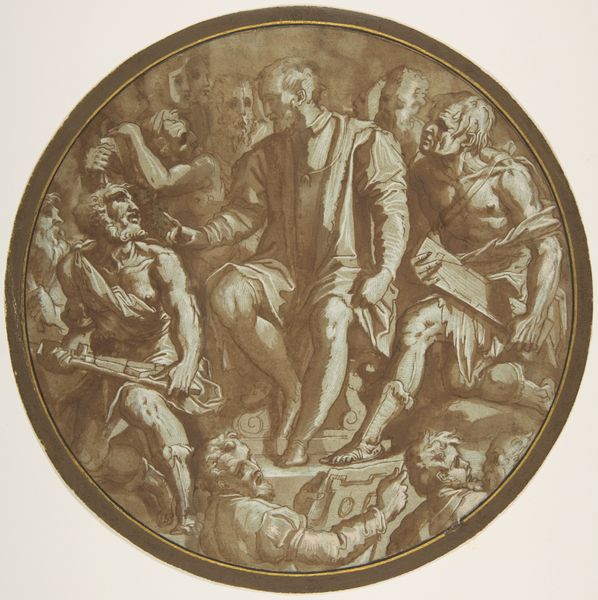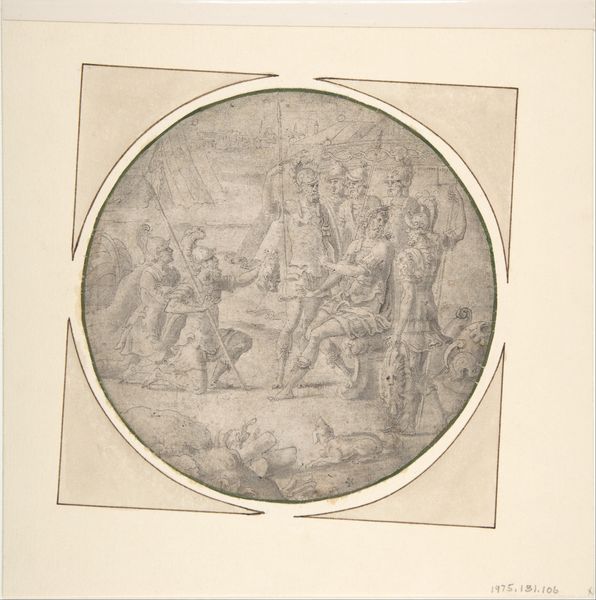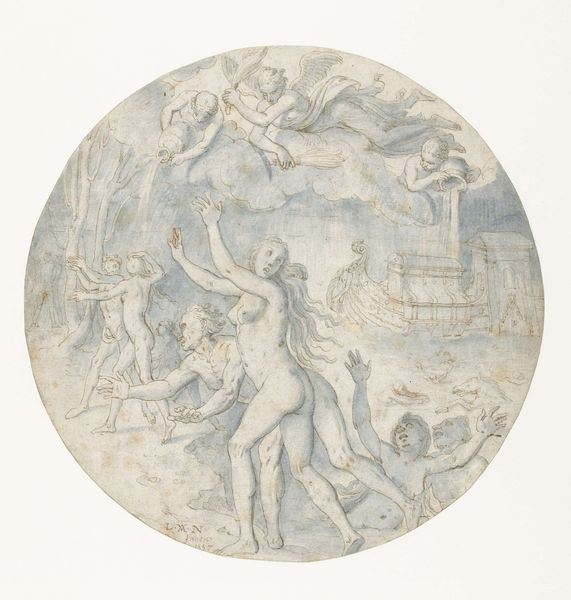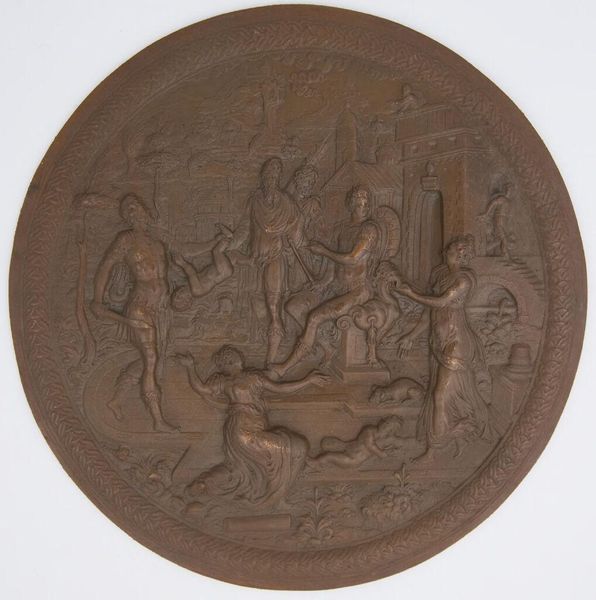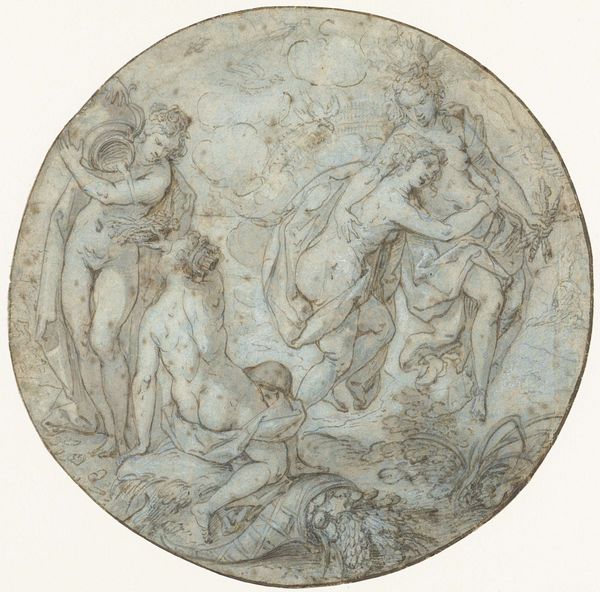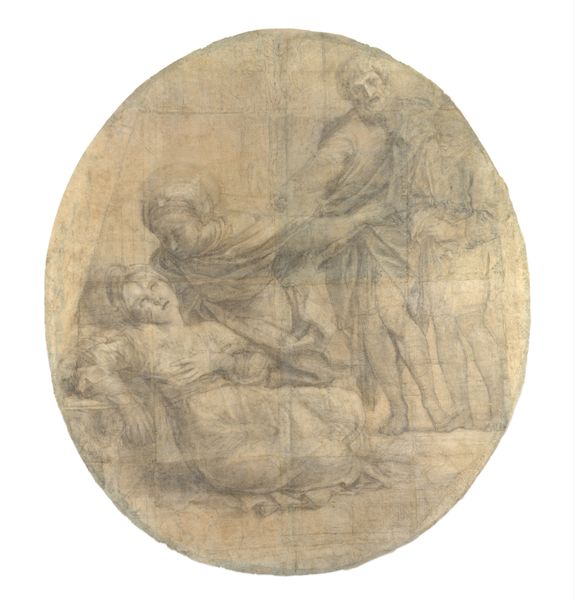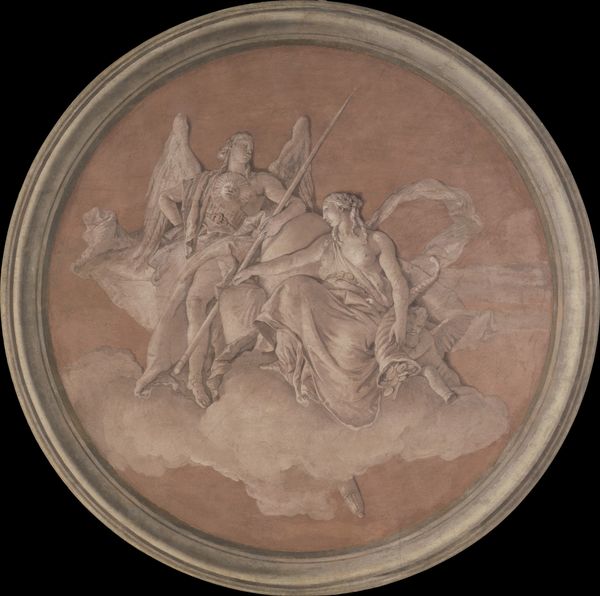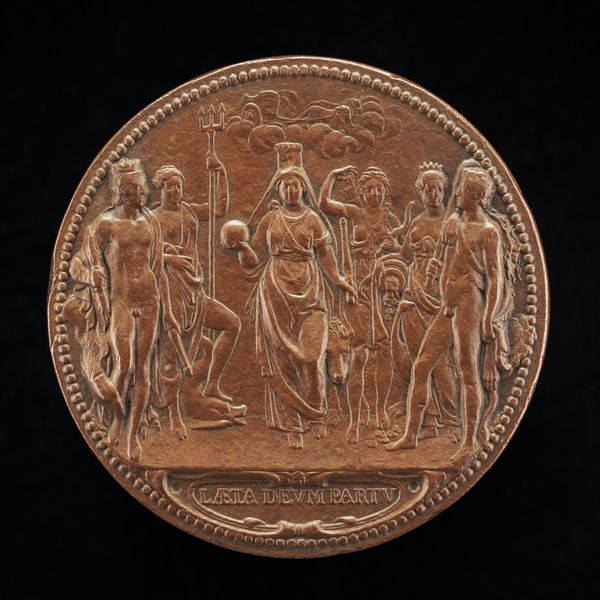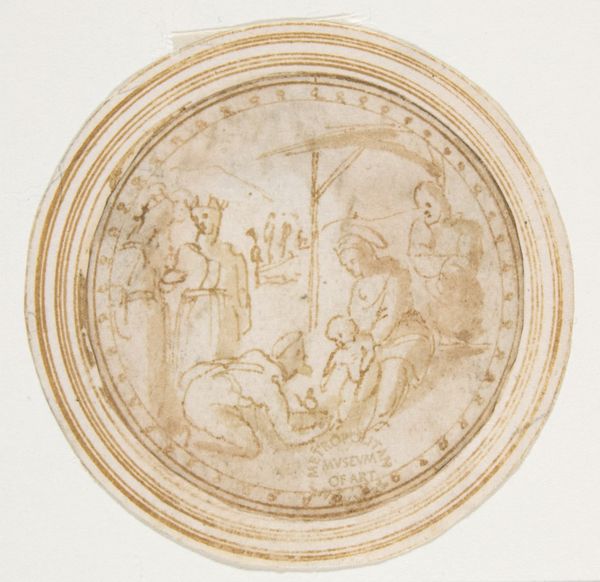
drawing, print, sculpture
#
drawing
#
allegory
# print
#
sculpture
#
mannerism
#
figuration
#
11_renaissance
#
female-nude
#
sculpture
#
history-painting
#
male-nude
Dimensions: 7 inches in diameter (17.7 cm)
Copyright: Public Domain
Curator: What strikes me immediately is the swirling, almost disorienting composition; there's a density here that begs further investigation. Editor: Indeed. What we are looking at is a print titled "The Judgment of Paris" by Pieter de Jode I, dating sometime between 1580 and 1634. It depicts the famous scene from Greek mythology. Curator: Right, the story of Paris, a Trojan prince, being asked to judge which of the three goddesses—Hera, Athena, and Aphrodite—is the most beautiful. The dense arrangement, typical of Mannerism, adds a layer of complexity to the reading of the scene itself. Editor: The print medium is fascinating here, though. Consider the labour involved in producing such a detailed engraving, and the economic systems that supported its creation. These prints functioned as a form of visual currency, disseminating classical narratives among a wider audience. Curator: Agreed, and notice how the artist uses the lines to create a real sense of depth. There's a foreground, a middle ground with the main figures, and then the landscape fading into the background. Paris, reclining with his shepherd’s crook, seems rather unwilling, no? Editor: Unwilling and deeply implicated. What fascinates me is the reproduction of classical sculpture through this print medium. There is a sense of three-dimensionality, emulating sculptural forms and the commodification of classical forms. It connects this mythological tale with artistic craftsmanship and cultural dissemination. Curator: And there's an unmistakable erotic charge, especially in the presentation of the goddesses. The male nude in contrapposto as well, mirroring those classic sculptural postures of course. The artist really uses those classical forms to represent power and authority but simultaneously reduces them for mass consumption and ownership. Editor: Exactly! In the production of these images and their subsequent distribution, the cultural value of mythology is actively constructed, renegotiated, and indeed consumed by society. Curator: Studying de Jode's choices regarding line and form really makes us analyze how artistic traditions get transformed and reinterpreted over time, how the beauty is then democratized in the format of the printed form for broader access and viewing. Editor: Yes, it is in exploring this intersection that this print comes to its most thought-provoking moment: between the artist's hand and the conditions of making that a story such as this is so elegantly preserved, altered and circulated through time.
Comments
No comments
Be the first to comment and join the conversation on the ultimate creative platform.
